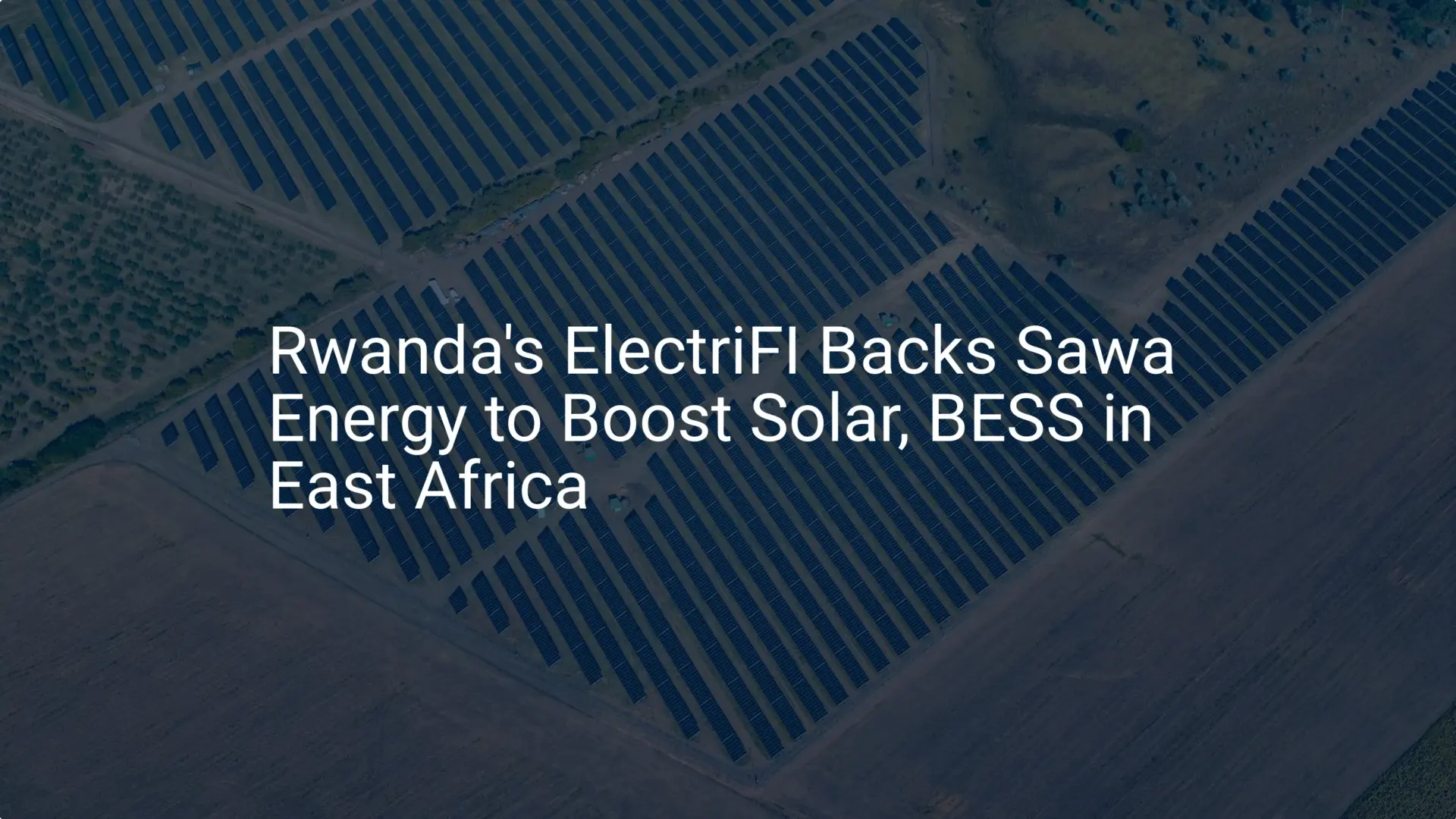When entrepreneurs and investors evaluate solar module manufacturing in Africa, the conversation usually centers on market demand and capital investment. But an equally critical factor—and one that is frequently underestimated—is the availability of a skilled local workforce.
In Rwanda, a nation with ambitious electrification goals and a youthful population, this human element is not a barrier but a significant opportunity, if approached with a clear strategy.
This guide outlines a framework for navigating the Rwandan labor market for solar module assembly, from sourcing technical talent and understanding wage expectations to structuring an effective training program that builds a proficient, self-sufficient team from the ground up.
Understanding Rwanda’s Labor Landscape for Manufacturing
Rwanda’s economic vision is supported by demographics that are compelling for new industrial ventures. With a median age of just 22.7 years, the country has one of the youngest populations in Africa, creating a large, dynamic pool of potential employees eager for stable, long-term employment.
While youth unemployment sits around 21%, this figure also represents a substantial opportunity for industries like solar manufacturing to create meaningful jobs. The Rwandan government actively encourages this through its focus on Technical and Vocational Education and Training (TVET), which aims to equip young people with practical skills for the modern economy. This national strategy fosters a favorable environment for investors willing to contribute to skills development as part of their business model.
Sourcing Technical Talent: The Role of IPRCs
A common concern for investors, especially those without a technical background, is finding individuals with the right foundational skills. In Rwanda, the primary source for this talent is the network of Integrated Polytechnic Regional Colleges (IPRCs).
These institutions are central to the nation’s TVET strategy and produce graduates with diplomas in technical fields, including Electrical and Electronics Engineering. Candidates from IPRCs typically possess:
- A Solid Technical Foundation: They understand basic electrical principles, safety protocols, and are comfortable working with tools and machinery.
- Practical Aptitude: The IPRC curriculum emphasizes hands-on learning, making graduates well-suited for a manufacturing environment.
- A Willingness to Learn: They are at the start of their careers and are receptive to specialized, industry-specific training.

It is important to understand that while IPRC graduates have the necessary aptitude, they do not emerge as ready-made solar module technicians. They require a structured, in-house training program to bridge the gap between their general technical education and the specific demands of a solar assembly line.
Experience from J.v.G. Technology GmbH projects has shown that building relationships with local IPRCs is an effective recruitment strategy. This approach allows a factory to select the most promising candidates to form its initial operational team.
Establishing Competitive and Realistic Wage Structures
Budgeting for labor costs requires an accurate understanding of the local market. While official data can be broad, on-the-ground experience provides more specific benchmarks. Based on recent industrial projects in Rwanda, the following wage expectations can serve as a preliminary guide for financial planning:
- Entry-Level Technician (IPRC Graduate): RWF 150,000 – 250,000 per month (approximately $120 – $200 USD).
- Experienced Engineer / Senior Technician: RWF 500,000 – 800,000 per month (approximately $400 – $650 USD).
These figures are indicative and should be verified during the detailed business planning phase. They represent a competitive wage that can attract and retain qualified technical staff. Labor costs are a critical component of a factory’s operational expenditure (OPEX), and understanding these figures is a key step in the overall factory planning process.
A Structured Framework for Employee Training
The success of any operation hinges on transforming raw technical talent into a highly efficient production team. This is not achieved through a single event but through a phased training program designed to build skills systematically. A proven approach involves three distinct phases.
Phase 1: Foundational Knowledge (2–4 Weeks)
This initial phase takes place in a classroom and on the factory floor before machines are in full operation. Its objective is to establish a strong baseline of knowledge for all new hires. Key topics include:
- Workplace safety protocols and personal protective equipment (PPE).
- Fundamentals of photovoltaic technology: how solar cells work and how modules generate electricity.
- Proper handling procedures for fragile materials, particularly solar cells and glass.
Phase 2: Specialized Machine Operation (4–6 Weeks)
This is the most critical phase, where operators receive hands-on training for the specific solar manufacturing equipment they will use. This training is most effective when conducted by the engineers who commission the machinery. For a turnkey solar module manufacturing line, this skills transfer is an integral part of project delivery. Operators learn the step-by-step processes for:
- Stringer Machine: Soldering solar cells into strings.
- Layup Station: Assembling the ‘sandwich’ of glass, EVA, cell matrix, and backsheet.
- Laminator: Operating the lamination cycle to encapsulate the module.
- Framer and Junction Box Station: Completing the final assembly.

Phase 3: Quality Control and Maintenance (Ongoing)
Once production begins, training shifts to focus on consistency and quality. This phase is continuous and aims to empower the local team to manage and optimize the production process independently. It includes:
- Visual Inspection: Identifying common defects like scratches, soldering errors, or misalignments.
- EL Testing: Interpreting electroluminescence images to detect microcracks and other invisible cell defects.
- Basic Machine Maintenance: Performing routine checks, cleaning, and preventative maintenance to ensure equipment reliability.
Developing Local Leadership and Ensuring Long-Term Success
A sustainable operation depends on developing local leadership. During the initial training phases, it is essential to identify individuals who demonstrate strong technical skills, problem-solving abilities, and leadership potential. These candidates can then be groomed to become team leaders, quality controllers, and maintenance supervisors.
Investing in these future leaders is crucial for long-term success. It reduces reliance on expatriate management, lowers operational costs, and builds a resilient, self-sufficient local enterprise. The ultimate goal is a factory floor run efficiently and confidently by a fully Rwandan team.

Frequently Asked Questions (FAQ)
What is the minimum educational requirement for an assembly line operator?
While a diploma from an IPRC is ideal for technical roles, assembly line positions can be filled by candidates with a strong secondary education, as long as they demonstrate mechanical aptitude and undergo the full foundational training program.
How many employees are needed for a small-scale (e.g., 50 MW) assembly line?
A typical 50 MW semi-automated line requires approximately 25 to 35 employees per shift. This includes machine operators, quality control inspectors, maintenance technicians, and supervisory staff.
Is it difficult to find English-speaking candidates in Rwanda?
No. English is one of Rwanda’s official languages and is the primary language of instruction in post-secondary education, including at IPRCs. This greatly simplifies the training process and communication with international partners and equipment suppliers.
Conclusion and Next Steps
Rwanda presents a strong case for investment in solar module manufacturing, not just because of market demand, but because of its available and motivated workforce. Success does not depend on finding pre-trained experts, but on implementing a systematic process to develop local talent.
By sourcing candidates from institutions like the IPRCs and deploying a structured, three-phase training program, an investor can build a world-class production team. This focus on human capital is the key to transforming a capital investment into a thriving, sustainable, and impactful local business. Integrating this knowledge into a comprehensive business plan is the essential next step toward success.






